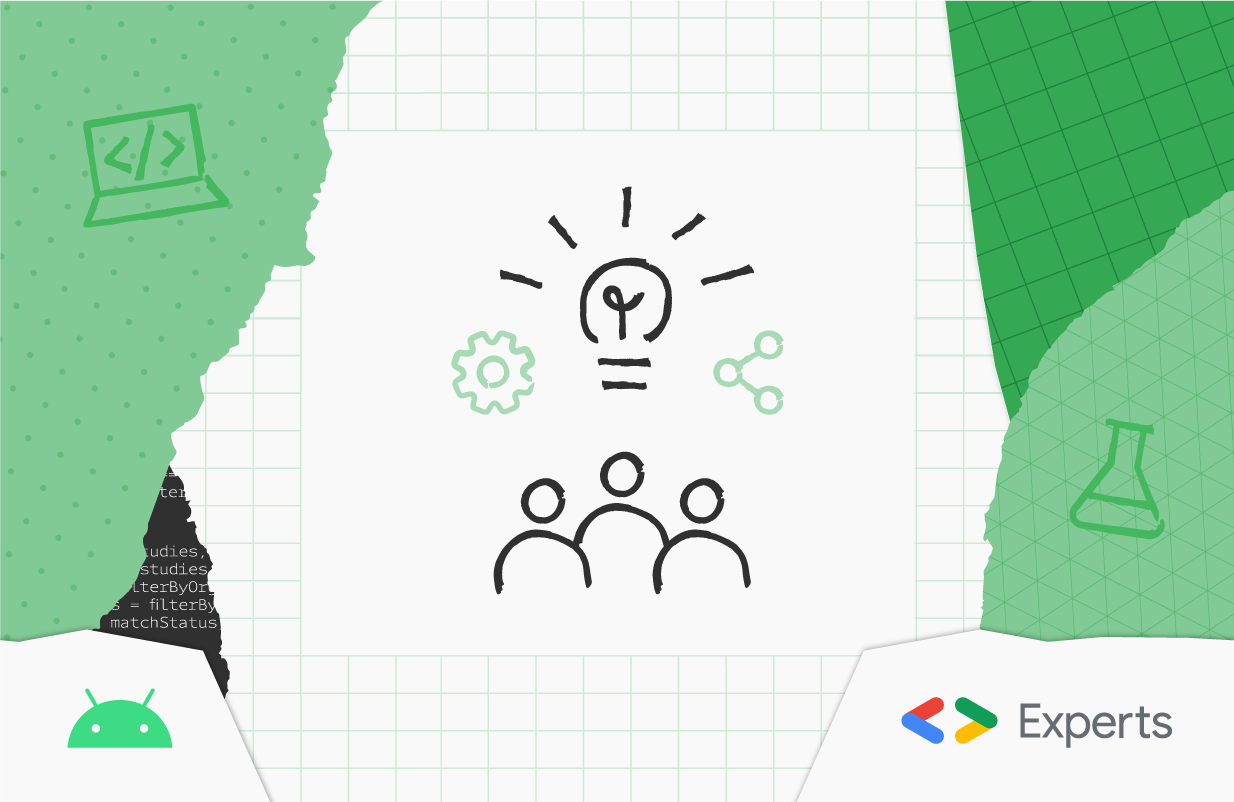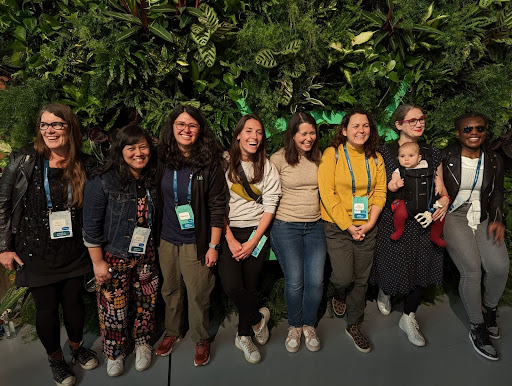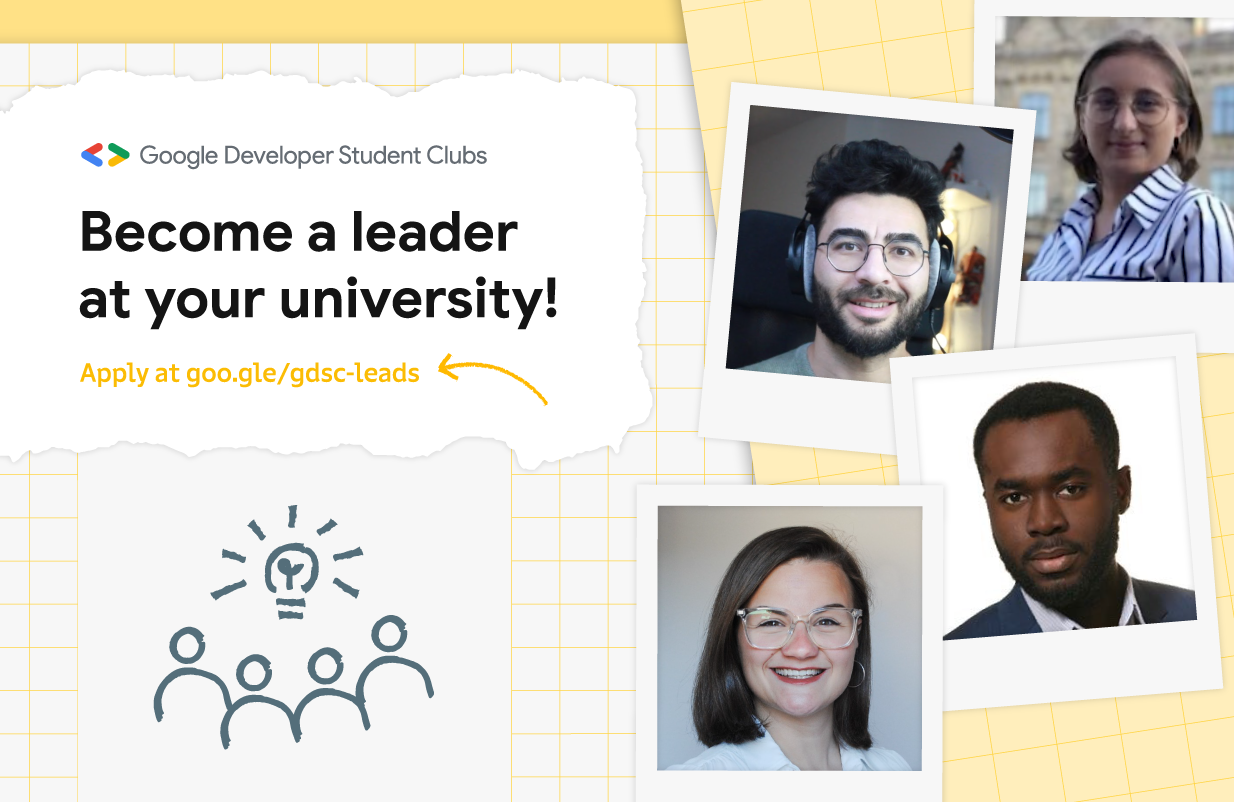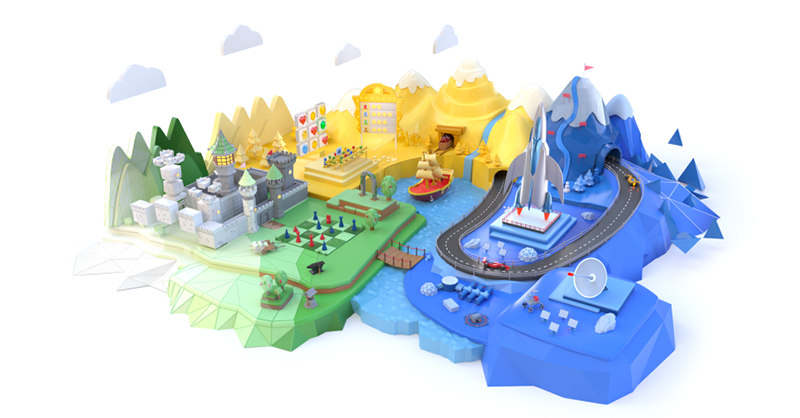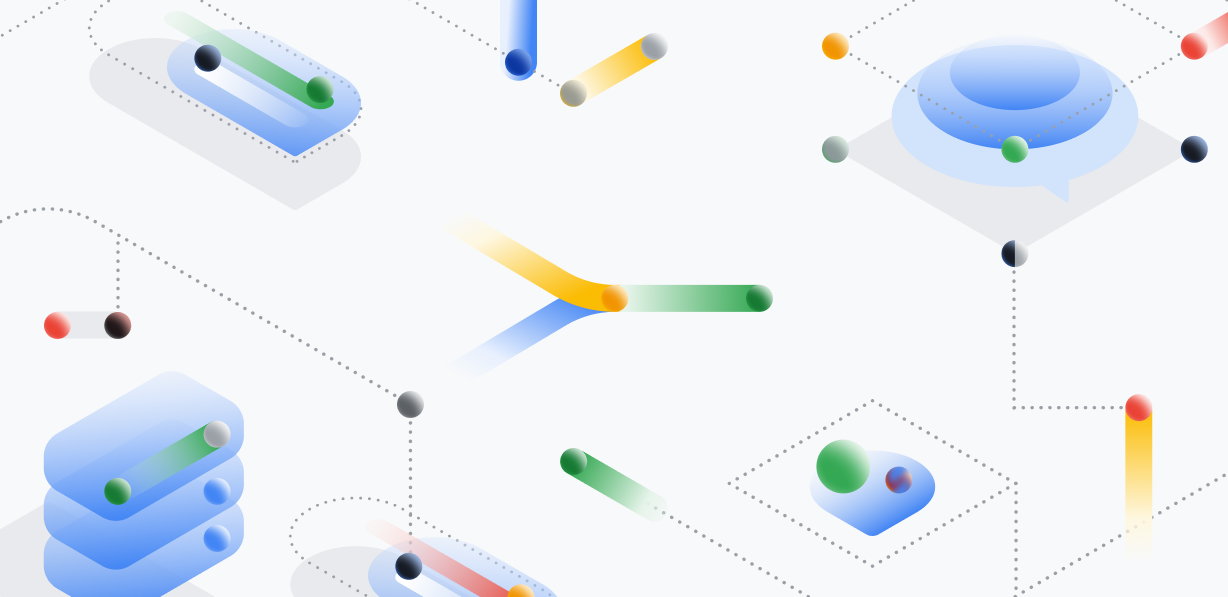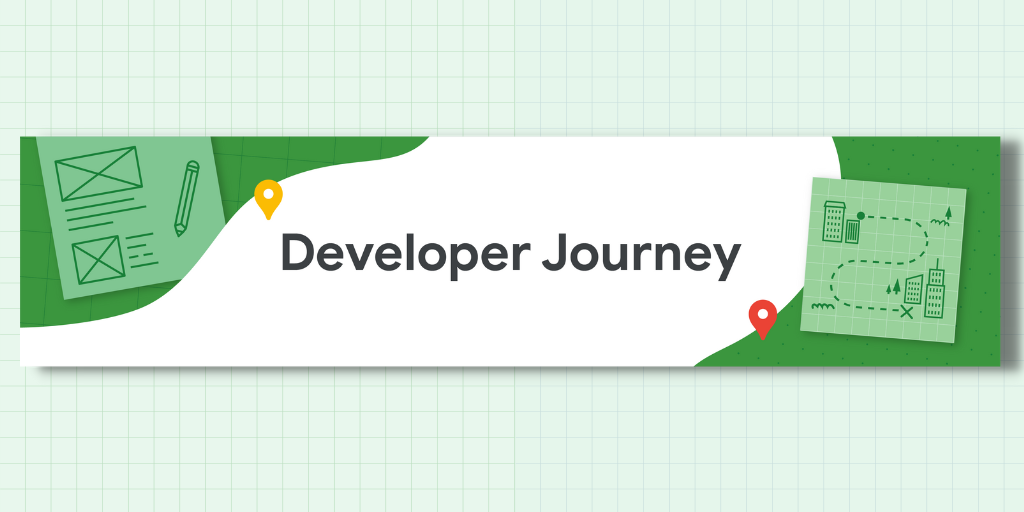
Posted by Lyanne Alfaro, DevRel Program Manager, Google Developer Studio

Developer Journey is a monthly series to spotlight diverse and global developers sharing relatable challenges, opportunities, and wins in their journey. Every month, we will spotlight developers around the world, the Google tools they leverage, and the kind of products they are building.
This month, it’s our pleasure to feature three members from the Google Developer Experts community. Enjoy reading through their entries below and be on the lookout on Google Developer communities’ social media platforms, where we will also showcase their work.
Ruqiya Bin Safi
Google Developer Expert, Machine Learning
Women Techmakers Ambassador
Jeddah, Saudi Arabia
Data Scientist
What Google tools have you used to build?
I used TensorFlow, one of the most widely used tools for building machine learning models. It is employed in a variety of applications including image recognition, speech recognition, and natural language processing.
Besides TensorFlow, I have used several cloud-based products for ML/AI development, such as Google's Vertex AI. This powerful platform enables developers to accelerate machine learning development and deployment by providing a unified platform for data, AI, and tooling for both pre-trained and custom models. With Vertex AI, developers can implement MLOps practices to efficiently manage, monitor, and govern their ML workloads. This includes features like automated model tuning, model management, and model serving.
Another useful Google tool that I often use is Google Colab, a cloud-based notebook that enables users to run and share Jupyter notebooks with Python code, including TensorFlow code.
Which tool has been your favorite to use? Why?
One of my favorite tools to use is Google Vertex AI. This platform provides an end-to-end solution for building, deploying, and managing machine learning models. It offers a user-friendly interface for data processing, model training, and model deployment without requiring extensive knowledge of machine learning.
Google Vertex AI also has a wide range of pre-built models, such as image and speech recognition, text classification, and more - which can be used to jumpstart machine learning projects. The platform also allows for customization of these pre-built models or the ability to create your own models. Additionally, it provides automatic hyperparameter tuning, which helps to optimize model performance.
Another great feature of Google Vertex AI is its scalability. It can handle large datasets and can automatically scale resources up or down based on demand, making it ideal for organizations with varying machine learning needs.
Overall, Google Vertex AI is a powerful and user-friendly tool that makes machine learning accessible to a wider audience. Its combination of pre-built models, customization options, automatic hyperparameter tuning, and scalability make it an excellent choice for both beginners and advanced machine learning practitioners.
Tell us about something you've built in the past using Google tools.
I collaborated with my team in the Smartathon competition to develop an object detection model utilizing two distinct methods: YOLOv3 Tensorflow, pre-trained on ImageNet dataset, and Google AutoML. Our primary goal was to accurately identify and locate various objects within images. The Smartathon competition specifically targets visual pollution on street imagery taken from a moving vehicle. The objective is to introduce a new field of automated visual pollution classification for environmental management using advanced technology.
Meanwhile, participants simulate human learning experience by training and testing convolutional neural networks for picture identification and visual pollutant classification. The competition aims to create a "visual pollution index" for urban areas, which could become a new metric in urban environmental management. The competition dataset consists of raw sensor camera inputs captured by a fleet of multiple vehicles in a specific geographic area in KSA. We were motivated to participate and to have an impact on further development in city planning and to empower communities worldwide.
What advice would you give someone starting in their developer journey?
- Choose a specific field or technology that you are interested in and focus on it. There are so many areas of development to explore, so it's important to identify your interests and invest your time and energy in developing expertise in that area.
- Practice coding regularly. The more you practice, the better you will become.
- Join a developer community or attend developer meetups. This can help you learn from other developers, get feedback on your work, and stay up-to-date on the latest trends and technologies.
- Read documentation and tutorials regularly. This will help you stay up-to-date on the latest trends and technologies and keep your skills sharp.
- Don't be afraid to ask for help. Developers are a helpful community, and there are many resources available online to help you with any questions or issues you may encounter.
- Develop good coding habits early on. This includes writing clean and readable code, commenting on your code, and using version control.
- Always be willing to learn and adapt. Technology is constantly evolving, so it's important to stay open to new ideas and be willing to learn new technologies and programming languages.
- Remember that becoming a successful developer takes time and effort, but with persistence, dedication, and a passion for coding, you can achieve your goals.
Antonio Leiva
Google Developer Expert, Kotlin and Android
Madrid, Spain
What Google tools have you used to build?
Android and all the AndroidX libraries. In particular, I use Jetpack Compose a lot nowadays.
Which tool has been your favorite to use? Why?
Jetpack Compose is one of the tools that I'm dedicating most of my time to. As a trainer, I believe it's the right time to learn this technology, and as a developer, I see it as a game-changer in terms of interface creation.
The development speed is significantly increased, and in my opinion, it's a much more natural way to create UI code. Additionally, being cross-platform opens up a world of possibilities that were previously unimaginable.
Tell us about something you've built in the past using Google tools.
I have built many amazing applications while working on projects for other companies. The most challenging one was Plex, where we worked on a multimedia playback and personal catalog product. There, we faced many complexities that are hard to find in typical applications.
Perhaps the project I am most proud of has been the creation of my own teaching academy, DevExpert, where I help other programmers become experts in Android technologies and the Kotlin language.
What advice would you give someone starting in their developer journey?
One thing that truly ignited my passion for my work and software development was participating in community events hosted by the likes of Google Developer Groups, where I discovered many talented individuals who genuinely enjoyed their daily tasks.
This energy inspired me to improve in my profession and to create content that would assist others in similar situations.
So my advice is to become involved in communities, attend events, and dedicate time to helping others follow the same path.
Aurélie Vache
Google Developer Expert, Cloud technologies
Toulouse, France
DevRel, OVHCloud
What Google tools have you used to build?
As a developer and data lover, I use several Google products and I have been a Cloud enthusiast for many years.
I’ve used:
- Google Cloud Platform: BigQuery, GKE, Cloud Run, Cloud Functions, Anthos, Pub/Sub, Cloud Code, Cloud Build, Container Registry
- Android Studio
- Google Maps API
- GWT
When it comes to building, accessibility and AI also matter to me so I used Cloud Vision API, Cloud Text to Speech API, Cloud Speech to Text API & Cloud Translation API.
I am working for OVHcloud, a European Cloud provider, so I’m not using Google Cloud technologies at the moment, but I continue to use a language that I love: Golang. It is one of the languages used within OVHcloud to create new cloud provider services.
Moreover, for several years, I have been using and sharing a lot about Kubernetes and Isio - two projects created and open-sourced by Google.
Which tool has been your favorite to use? Why?
I have two tools in my mind when I am thinking about Google.
The first one is Google BigQuery. In my first company, we needed to analyze data for our internal teams and our customers, and the first technical architecture that we had put in place was based on the Hadoop ecosystem with a cluster under Cloudera of ten hosted servers. The performance was there, but the time spent on maintenance and operations was high.
When BigQuery was mature enough and met our needs on paper, we decided to test this new Google technology and migrate our products. We’ve spent years creating tools related to BigQuery, customizing and fine-tuning queries, monitoring developments, and maintaining products.
Another tool that I love is Kubernetes. It is a container orchestrator created and open-sourced by Google that I discovered and used a lot at a previous job. Since then, I have used this tool often in production. I gave several talks at conferences on it, published many blog posts, and used sketchnotes to explain this technology in a visual way.
Now, I work with the OVHcloud teams who create and maintain managed Kubernetes clusters. It's a pleasure to test, give feedback, help on the UX and DX of the solutions, write articles, tutorials, talk to users, and just keep working daily with Kubernetes.
Tell us about something you've built in the past using Google tools.
In my first company, I co-created moderation and community management tools. First, there was an application that centralizes all conversational content flows in real time, regardless of the social network, website, or blog. This application, made in Java and Google Web Toolkit, is still used by teams of moderators, community managers, watchers, and supervisors who can moderate, classify, and apply a tone to the content of the messages.
After linking this tool to Google BigQuery to store data in real time, it was possible to do so much more. We could moderate content in post, generate customer reports, and dashboards for teams.
What advice would you give someone starting in their developer journey?
Learn every day. We are lucky to do a job that allows us to learn every day. You have the right to make mistakes and to learn from those mistakes properly.
There are plenty of great communities through which you could attend presentations. Talk to other developers and then feel free to share from your end as well.
One more thing: Trust yourself. Don't try to copy others. Be yourself. Stay yourself. Have confidence in yourself, in your ideas, and in your abilities.

 Posted by Kevin Hernandez, Developer Relations Community Manager
Posted by Kevin Hernandez, Developer Relations Community Manager









